Let me share this special Binubudan recipe that I learned from my Lola. Don't worry if you've never made fermented rice before, it's actually much easier than it sounds.
Growing up, I used to watch my grandmother make this sweet rice treat in our kitchen in Northern Luzon, and now I'm excited to show you how it's done. You only need three ingredients: sticky rice, a rice yeast ball (which you can easily find in Asian stores or online), and water. That's it!
Think of it as nature's magic: the rice transforms into a sweet, creamy dessert all by itself, without adding any sugar. My kids love watching the center of the rice slowly fill with juice, just like I did when I was little.
Every time I make this at family gatherings, everyone asks for the recipe, surprised that something so simple can taste so special. Once you try making Binubudan at home, you'll understand why it's been a treasured Filipino dessert for generations. I've simplified all the steps so you can make it perfectly on your first try.
What is Binubudan?
Binubudan, also known as Binuburan in Pangasinan, is a fascinating example of natural culinary transformation. This cherished fermented rice delicacy from Northern Luzon is made by fermenting cooked glutinous rice with traditional rice yeast (bubod), which converts the starches into natural sugars, creating a sweet, porridge-like dessert with a distinctive pearly white appearance and subtle fermented aroma.
Jump to:
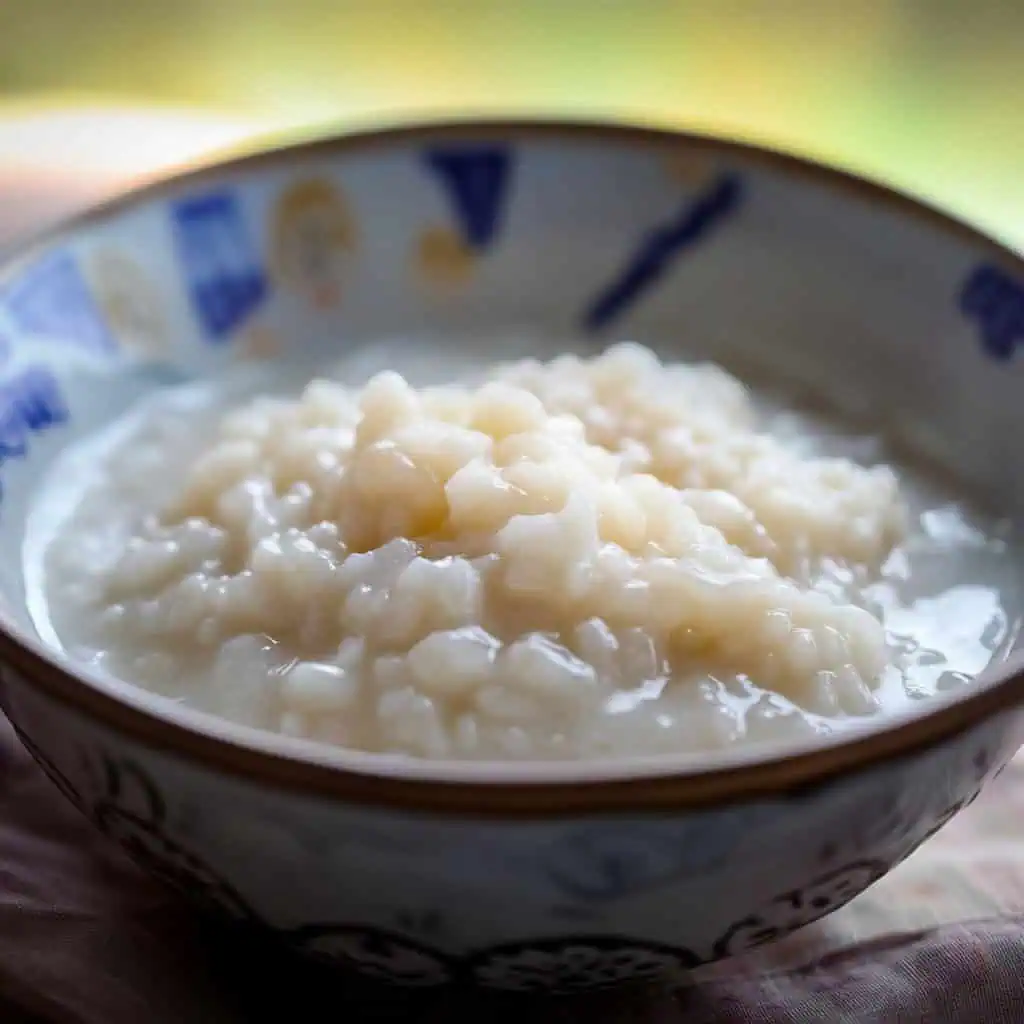
Why You'll Love This Recipe
- Authentic taste of Northern Luzon cuisine
- Natural sweetness without added sugar
- Versatile dessert that can be served warm or cold
- Can be transformed into traditional rice wine (Tapuy)
- Perfect for special occasions and cultural celebrations
- Made with just three simple ingredients
- Cost-effective homemade version
Ingredients
The beauty of Binubudan lies in its simplicity. Glutinous rice is essential because its high starch content provides the perfect food for fermentation, creating the signature sweetness without adding sugar.
The rice yeast ball (bubod) contains special microorganisms that transform the rice's starches into natural sugars, giving Binubudan its distinctive flavor and slightly alcoholic notes. Clean water is the final ingredient that activates the fermentation process while maintaining the right consistency.
Together, these three humble ingredients create a remarkable transformation that showcases the ingenuity of traditional Filipino cuisine - turning something as simple as rice into a complex, naturally sweet dessert with minimal effort and maximum flavor.
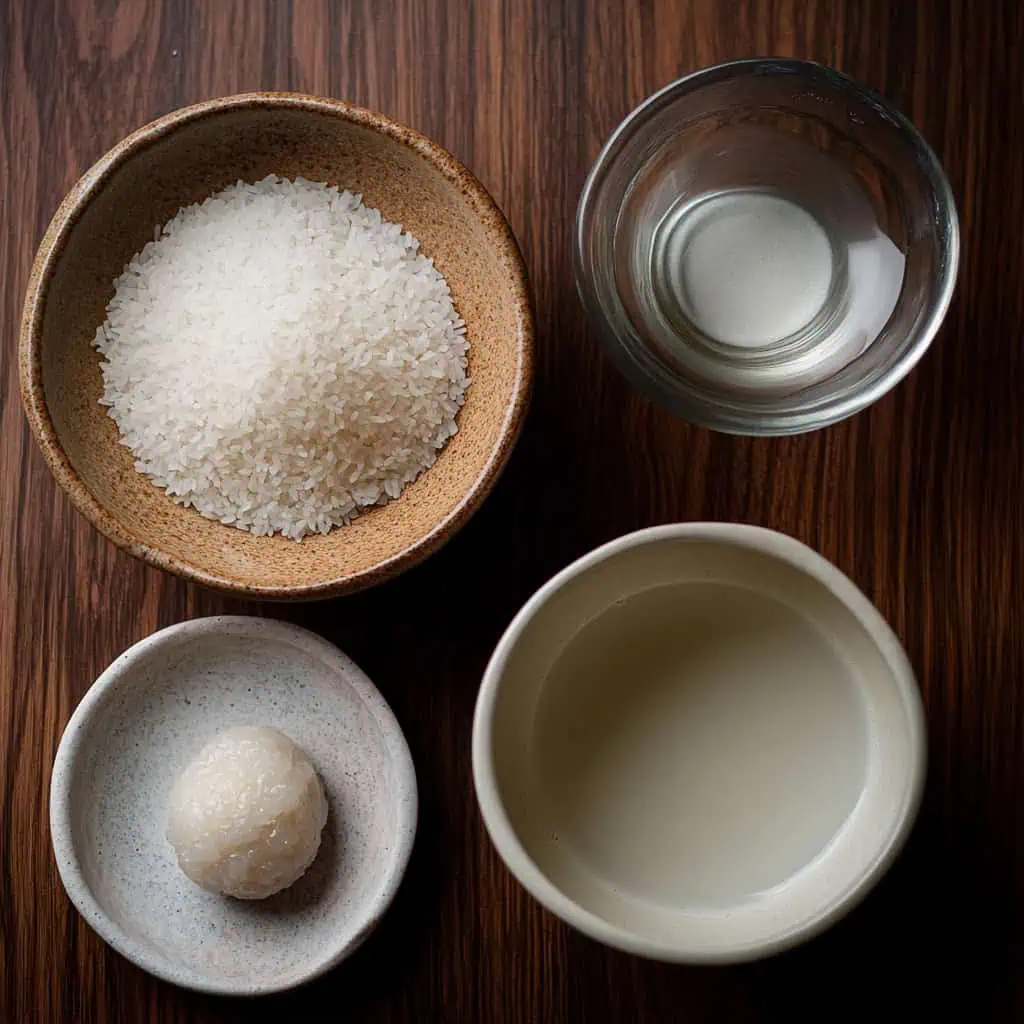
- 500g glutinous rice (malagkit na bigas)
- 1 rice yeast ball (bubod), about 10-15g
- Water as needed
Equipment
- Rice cooker or pot with lid - For cooking the glutinous rice thoroughly and evenly
- Pestle and mortar - For grinding the rice yeast ball into fine powder to distribute evenly
- Glass or food-grade plastic container - For fermentation (never use metal as it can react with the fermenting rice)
- Breathable cloth and rubber band - To cover the container while allowing air circulation
- Wooden spoon - For mixing ingredients and creating the depression in the rice
- Measuring cups and spoons (Panukat) - For accurate measurements
- Clean mixing bowl - For preparing the rice and yeast mixture
- Sterilized jars - For storing the finished product
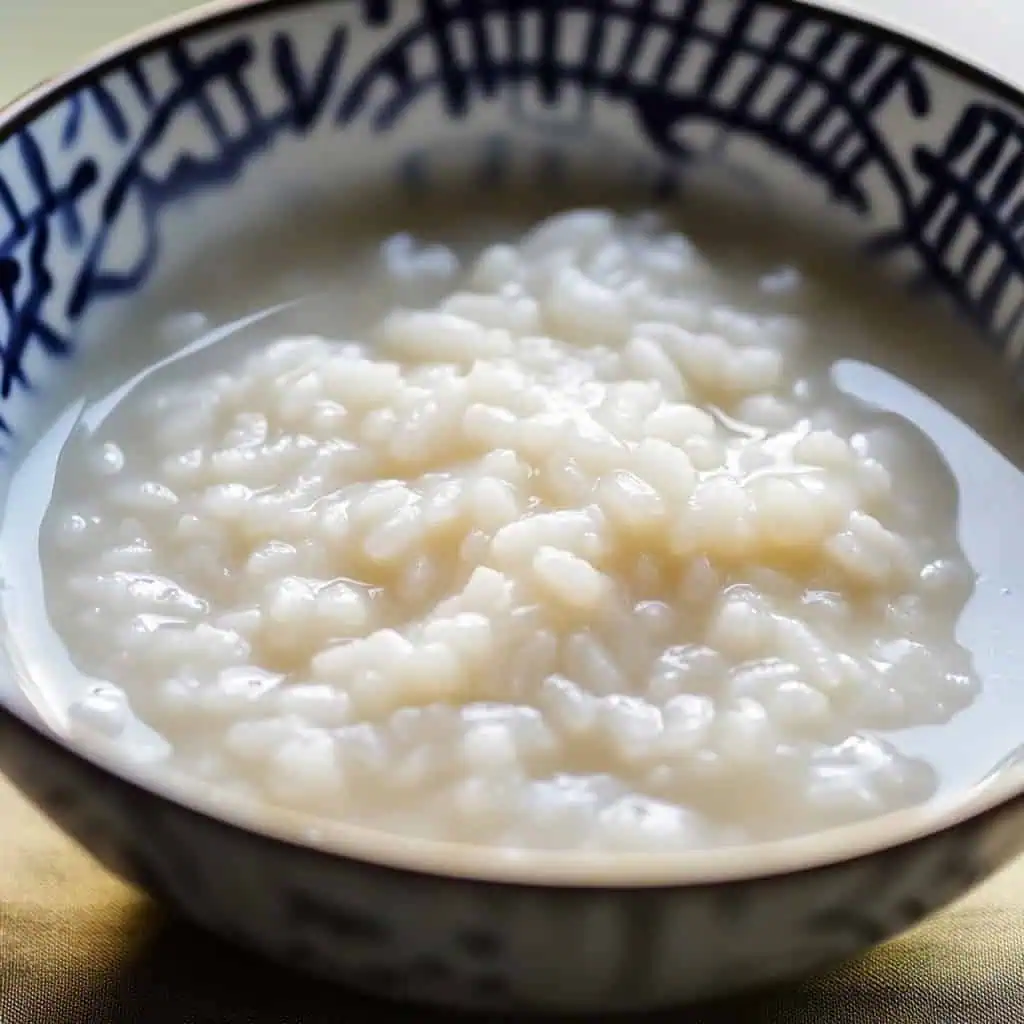
How To Make
- Thoroughly rinse 500g of glutinous rice and soak it in clean water for 4-5 hours or overnight at room temperature. Once soaked, drain the rice completely.
- Cook the rice either in a rice cooker or steam it in a pot with just enough water to cover the rice for 30-40 minutes until fully cooked. Let the cooked rice cool until it's warm to touch – you should be able to hold your finger in it comfortably without burning.
- While the rice is cooling, boil some water and let it cool completely. Take your rice yeast ball (about 10-15g) and grind it into a fine powder using a pestle and mortar.
- Transfer your warm rice to a clean mixing bowl and mash it with a wooden spoon. Add about half a cup of the cooled boiled water to the rice and sprinkle the ground yeast powder evenly over it. Mix everything thoroughly until well combined.
- Transfer this mixture into a clean, sterilized glass jar or plastic container. Using your wooden spoon, make a small depression in the center of the rice – this will help you see when fermentation is happening.
- Cover the container with a breathable cloth (not an airtight lid) and secure it with a rubber band.
- Place the container in a warm, dry spot in your house, ideally where the temperature stays between 25-30°C (77-86°F). Let it ferment for 2-4 days, depending on your room temperature – warmer temperatures will speed up fermentation.
- You'll know it's ready when you see liquid gathering in the center depression and the rice has become very moist with a sweet flavor. It should have a thick porridge-like consistency.
- Once it reaches your desired sweetness, stir the mixture and transfer it to the refrigerator. It will keep for up to a month in the fridge, or you can freeze portions for up to three months.
- Remember, the longer you let it ferment, the more alcoholic it will become, eventually turning into Tapuy (rice wine). For the best sweet flavor, enjoy it while it's freshly fermented.

Tips from Lola's Kitchen
- Sterilize everything: Always use sterilized equipment to prevent contamination. Rinse your containers with boiling water before use.
- Temperature is key: The warmer the environment, the faster the fermentation. Aim for 25-30°C (77-86°F) for best results.
- No metal, please: Never use metal containers for fermentation as they can react with the fermenting rice and affect the flavor.
- Shade is important: Keep your fermenting rice away from direct sunlight to prevent overheating.
- Consistency matters: Success depends on maintaining a consistent temperature throughout the fermentation period.
- Fresh is best: Fresh rice yeast balls work much better than older ones. Check the expiration date if buying from a store.
- Monitor moisture: If the mixture seems dry during fermentation, add 1-2 tablespoons of cooled boiled water to maintain proper moisture levels.
- Use the depression trick: Making a small depression in the center of the rice helps you monitor fermentation progress easily. When liquid pools in this depression, fermentation is active.
Substitutions
- Rice Variety: While glutinous rice is traditional and works best, you can experiment with black glutinous rice for a different color and slightly nutty flavor.
- Rice Yeast: If you can't find traditional bubod, some Asian markets sell Japanese koji or Chinese qu that can work as substitutes, though the flavor profile will be slightly different.
- Container: Traditional preparation uses banana leaf-lined bamboo baskets (bigao). If you have access to banana leaves, lining your container can add a subtle tropical flavor.
- Flavorings: For a modern twist, you can add a pandan leaf during the cooking phase of the rice to infuse a gentle fragrance.
Troubleshooting
- Not fermenting?
- Check if your room temperature is too cold (below 25°C/77°F)
- Ensure your rice yeast was fresh and properly ground
- Verify the rice wasn't too hot when adding the yeast (high temperatures can kill the yeast)
- Add a tablespoon of sugar to jump-start fermentation if needed
- Too sour?
- Your rice has fermented too long or at too high a temperature
- Move it to the refrigerator immediately to slow fermentation
- Use it for cooking savory dishes instead of as a dessert
- Mix with fresh coconut milk to balance the sourness
- Too dry?
- Add small amounts of cooled boiled water and mix gently
- Check that your container covering allows for proper humidity
- Ensure the container is in a location with suitable humidity
- Mold appeared?
- Unfortunately, you'll need to discard the batch
- For next time, ensure all equipment is properly sterilized
- Make sure to use clean, cooled boiled water
- Check that your covering allows air to circulate but keeps out contaminants
Storage & Reheating
- Refrigeration: Store in a clean glass jar in the refrigerator for up to 1 month.
- Freezing: Portion into smaller containers and freeze for up to 3 months.
- Proper containers: Use glass or food-grade plastic containers with lids for storage, but avoid airtight containers during the actual fermentation process.
- Thawing: Let frozen portions thaw slowly in the refrigerator overnight before serving.
- Serving temperature: Binubudan is best served at room temperature or slightly chilled, rather than hot.
- Reviving texture: If it becomes too thick after refrigeration, gently stir in a small amount of water before serving.
- Signs of spoilage: Discard if you notice any off odors, mold, or unusual discoloration.
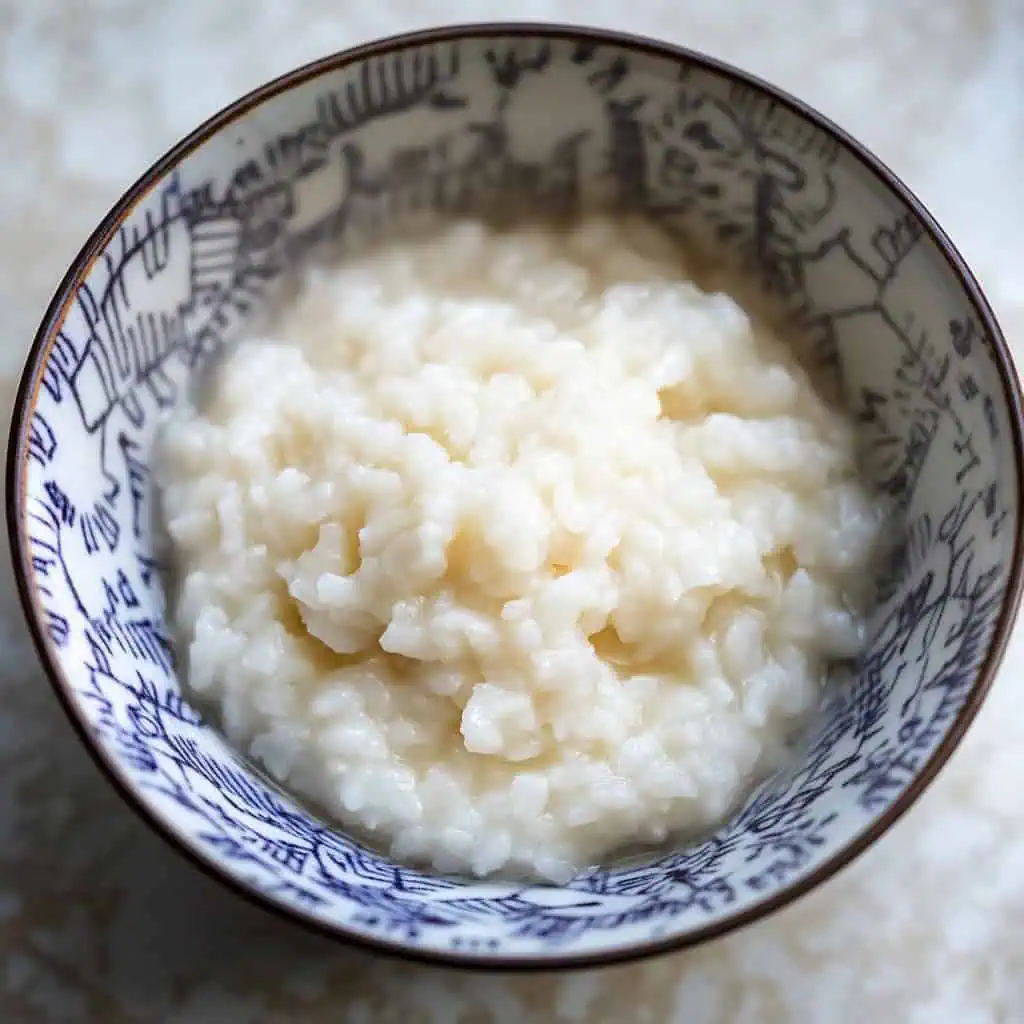
FAQ
How do I know if fermentation is successful?
Look for liquid accumulation in the center depression and a sweet aroma. The rice should be moist and have a thick porridge-like consistency with a slightly sweet taste.
Can I use regular rice instead of glutinous rice?
No, glutinous rice (malagkit) is essential for proper fermentation and texture. Regular rice will not produce the same results as it lacks the right starch composition.
Why did my Binubudan become sour?
Over-fermentation or too high temperature during fermentation can cause sourness. Check it after 2 days and refrigerate when it reaches your desired sweetness level.
Can I make this without rice yeast balls?
No, the rice yeast (bubod) is crucial for fermentation and cannot be substituted with regular baking yeast or other starters. It contains specific microorganisms that create the characteristic flavor.
How long can I store it?
Up to 1 month in the refrigerator or 3 months in the freezer. Always use clean utensils when serving to prevent contamination.
Is it supposed to taste alcoholic?
A very mild alcohol taste is normal, but if you want a less alcoholic version, refrigerate it as soon as it reaches your desired sweetness to halt fermentation.
Can I add sugar to make it sweeter?
Traditional Binubudan relies solely on natural fermentation for sweetness. Adding sugar can disrupt the fermentation process, but you can add a light drizzle of honey or coconut sugar when serving if desired.
Is this safe for children to eat?
Yes, when fermented for just 2-3 days, the alcohol content is minimal. However, longer fermentation results in higher alcohol content, making it more suitable for adults.
Can I double the recipe?
Yes, you can scale up the recipe as needed, just make sure your fermentation container is large enough to allow for expansion during fermentation.
What if I don't have a pestle and mortar?
You can place the rice yeast ball in a clean plastic bag and crush it with a rolling pin, though a mortar and pestle will give you the finest powder for even distribution.
Related
Looking for other recipes like this? Try these:

Binubudan (Traditional Filipino Fermented Sweet Rice)
Equipment
- Rice cooker or pot with lid (for cooking the glutinous rice)
- Pestle and mortar (for grinding rice yeast)
- Glass or food-grade plastic container (for fermentation)
- Breathable cloth and rubber band (for covering)
- Wooden spoon (for mixing)
- Measuring cups and spoons (Panukat)
- Clean mixing bowl
- Sterilized jars (for storage)
Ingredients
- 500 g glutinous rice malagkit na bigas
- 1 rice yeast ball bubod, about 10-15g
- Water as needed
Instructions
- First, thoroughly rinse 500g of glutinous rice and soak it in clean water for 4-5 hours or overnight at room temperature. Once soaked, drain the rice completely. Cook the rice either in a rice cooker or steam it in a pot with just enough water to cover the rice for 30-40 minutes until fully cooked. Let the cooked rice cool until it's warm to touch – you should be able to hold your finger in it comfortably without burning.
- While the rice is cooling, boil some water and let it cool completely. Take your rice yeast ball (about 10-15g) and grind it into a fine powder using a pestle and mortar. Transfer your warm rice to a clean mixing bowl and mash it with a wooden spoon. Add about half a cup of the cooled boiled water to the rice and sprinkle the ground yeast powder evenly over it. Mix everything thoroughly until well combined.
- Transfer this mixture into a clean, sterilized glass jar or plastic container. Using your wooden spoon, make a small depression in the center of the rice – this will help you see when fermentation is happening. Cover the container with a breathable cloth (not an airtight lid) and secure it with a rubber band.
- Place the container in a warm, dry spot in your house, ideally where the temperature stays between 25-30°C (77-86°F). Let it ferment for 2-4 days, depending on your room temperature – warmer temperatures will speed up fermentation. You'll know it's ready when you see liquid gathering in the center depression and the rice has become very moist with a sweet flavor. It should have a thick porridge-like consistency.
- Once it reaches your desired sweetness, stir the mixture and transfer it to the refrigerator. It will keep for up to a month in the fridge, or you can freeze portions for up to three months. Remember, the longer you let it ferment, the more alcoholic it will become, eventually turning into Tapuy (rice wine). For the best sweet flavor, enjoy it while it's freshly fermented.
- If at any point you notice a sour taste or strong alcohol smell, it means the mixture has fermented too long or at too high a temperature. In this case, you can still use it for cooking rather than as a dessert.
Tips from Lola's Kitchen
- Always use sterilized equipment to prevent contamination
- The warmer the environment, the faster the fermentation
- Never use metal containers for fermentation
- Keep away from direct sunlight
- Success depends on maintaining consistent temperature
- Fresh rice yeast balls work best
- If mixture seems dry during fermentation, add 1-2 tablespoons of cooled boiled water
Nutrition
The Story Behind Binubudan
In the heart of Northern Luzon, where rice paddies stretch as far as the eye can see, a remarkable culinary tradition has been passed down through generations. Binubudan, known as Binuburan in Pangasinan, is more than just a fermented rice dessert – it's a testament to our ancestors' ingenuity in creating something extraordinary from simple ingredients.
Long before modern desserts reached our shores, our great-grandparents discovered that mixing cooked sticky rice with natural rice yeast (bubod) created something magical. This process, which began as a way to preserve rice, transformed into an art form that defines the sweet tooth of Northern Luzon. In every Ilocano and Pangasinense household, you'd find this pearly white delicacy being prepared in traditional bigao (bamboo baskets) lined with fresh banana leaves, adding subtle layers of flavor that modern containers can't quite replicate.
What makes Binubudan truly special is its dual nature. When enjoyed early in the fermentation process, it's a sweet, creamy dessert that children eagerly await. But leave it to ferment longer, and it becomes Tapuy, the celebrated rice wine that has graced countless celebrations and ceremonies in the region. This versatility shows how our forebears understood the delicate dance of fermentation, creating both a beloved dessert and a ceremonial drink from the same process.
Today, while many Filipino families have adapted the recipe to use modern containers like mason jars, the essence remains unchanged. The natural sweetness that develops during fermentation, without adding any sugar, is the same taste that delighted our ancestors. Whether served in a humble barrio home or during grand town fiestas, Binubudan continues to tell the story of Northern Luzon's rich culinary heritage, one sweet spoonful at a time.
This time-honored recipe represents the heart of Filipino food culture – making something extraordinary from ordinary ingredients, letting nature work its magic, and sharing the results with loved ones. As more people discover this traditional delicacy, Binubudan stands as a proud reminder of the ingenuity and wisdom preserved in our local cuisine.
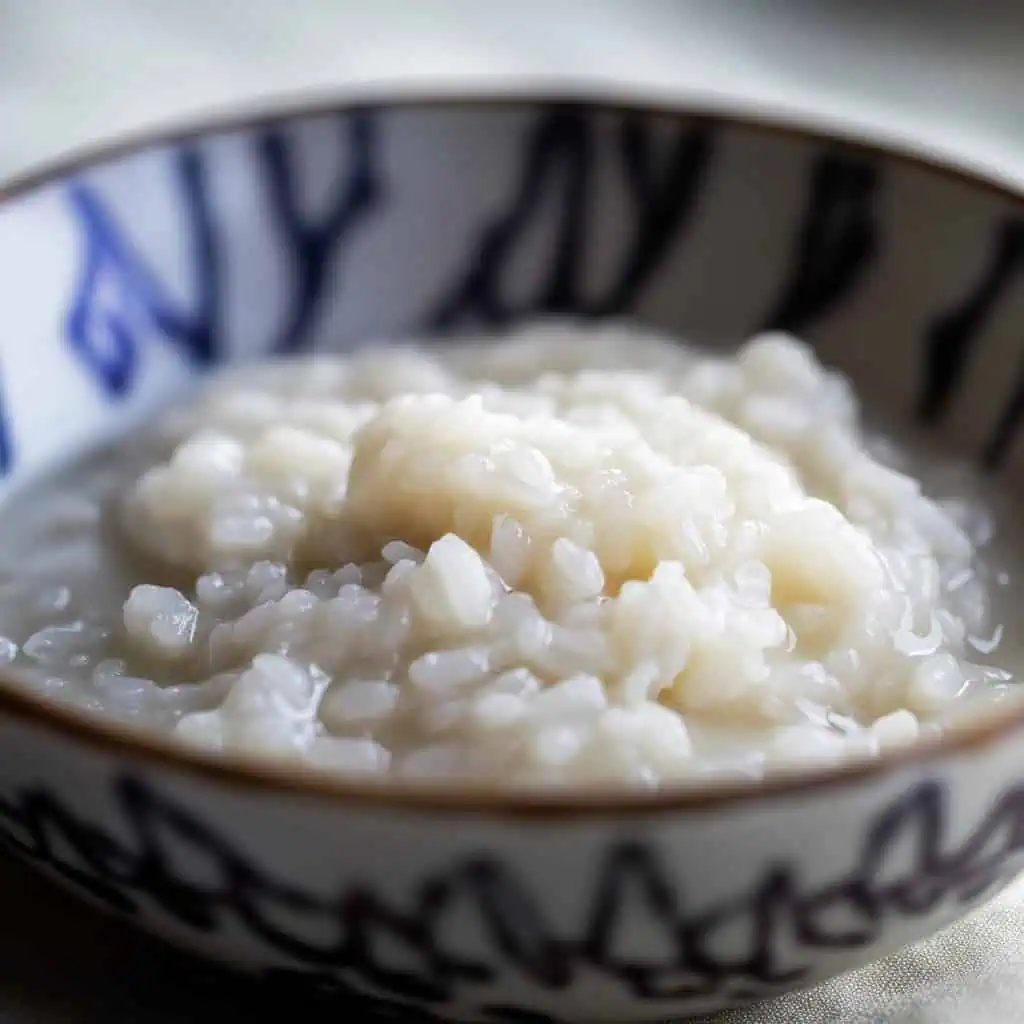


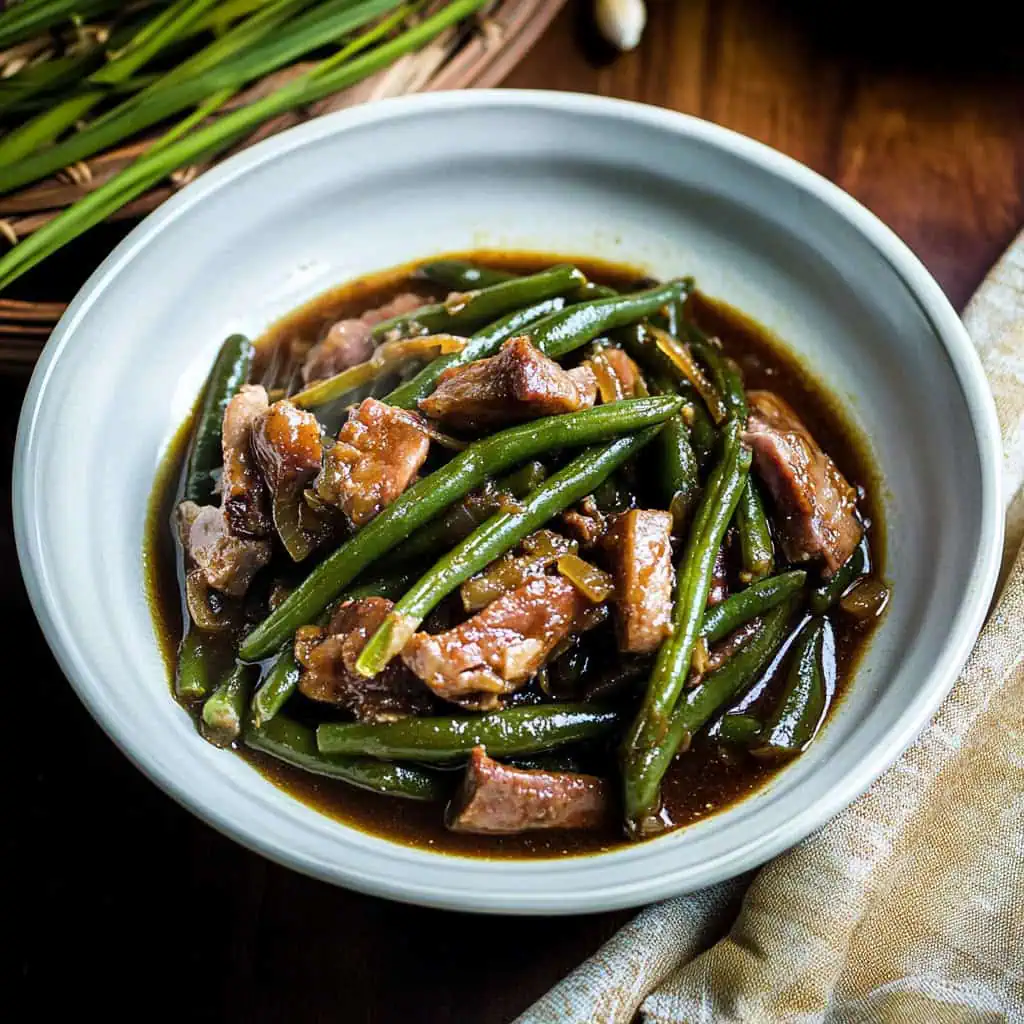


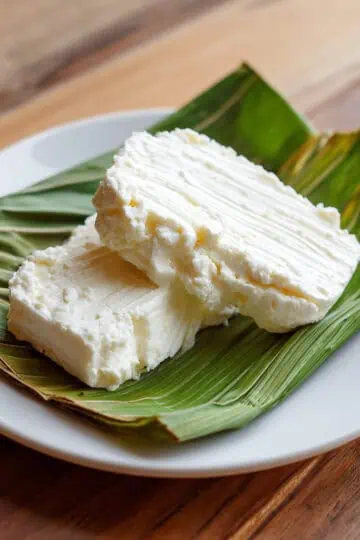



Comments
No Comments